Table of Contents
The Satavahanas, Sakas, and Kushanas were three important dynasties that ruled over various parts of ancient India. These dynasties played a significant role in shaping the political, social, and cultural landscape of the Indian subcontinent during their respective reigns.
The Satavahanas: Overview
The Satavahanas were a South Indian dynasty that ruled from the 1st century BCE to the 3rd century CE. They were known for their administrative skills and were responsible for the establishment of a stable and prosperous kingdom in the Deccan region. The Satavahanas were patrons of the arts and encouraged the development of literature, music, and dance.
The most prominent ruler of the Satavahanas was Gautamiputra Satakarni, who is credited with expanding the empire to include parts of present-day Andhra Pradesh, Maharashtra, Karnataka, and Tamil Nadu. He was also responsible for defeating the Shaka and Yavana invaders who had threatened the stability of the empire.
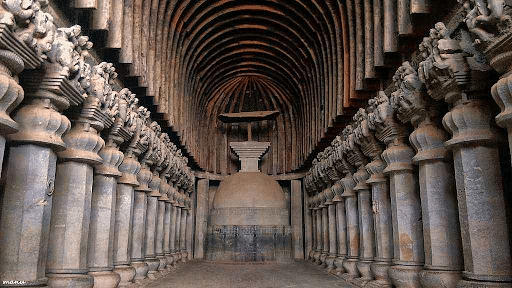
The Sakas: Overview
The Sakas were a Central Asian tribe that invaded India in the 2nd century BCE. They established a powerful kingdom in the northwestern part of the country, which is now modern-day Afghanistan and Pakistan. The Sakas were known for their military prowess and were responsible for introducing new weapons and techniques of warfare to the Indian subcontinent.
The most famous Saka ruler was Maues, who established his capital in Taxila and expanded the kingdom to include parts of present-day Pakistan and Afghanistan. However, the most significant contribution of the Sakas was the introduction of the Indo-Greek style of art and architecture, which had a lasting impact on Indian culture.
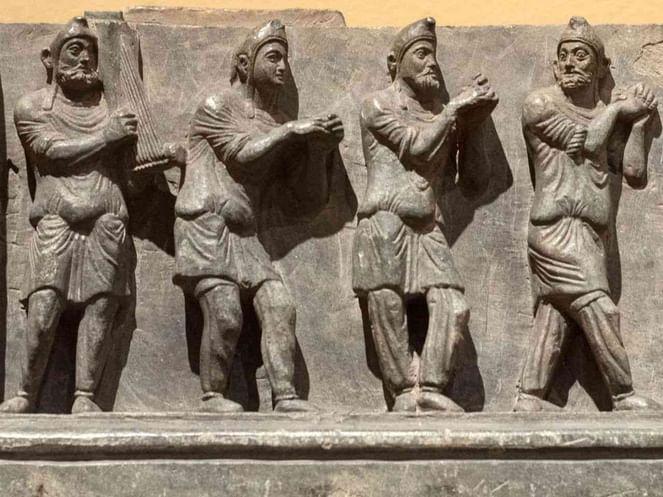
The Kushanas: Overview
The Kushanas were a Central Asian tribe that established a vast empire in northern India in the 1st century CE. They were known for their administrative skills and were responsible for the development of trade and commerce in the region. The Kushanas were also patrons of the arts and encouraged the development of literature, music, and sculpture.
The most famous Kushana ruler was Kanishka, who is credited with establishing a great empire that extended from Central Asia to the Gangetic plain. He was also responsible for promoting Buddhism and was a patron of Buddhist art and architecture. The Kushanas are known for their contribution to the development of the Gandhara school of art, which combined Indian and Hellenistic styles.

Satavahanas, Sakas, Kushanas in Detail
The Satavahanas, Sakas, and Kushanas were three dynasties that played a significant role in the history of ancient India. They were known for their administrative skills, military prowess, and patronage of the arts. Their contributions to the development of Indian culture and civilization are still felt today, and their legacy continues to inspire future generations.
Satavahana Dynasty
The Satavahanas were an ancient Indian dynasty that ruled over parts of the Indian subcontinent from the 1st century BCE to the 3rd century CE. They were known for their military prowess, administrative skills, and patronage of art and culture. The Satavahanas are considered to be one of the most significant dynasties in Indian history, and their contributions to Indian culture and society are still felt today.
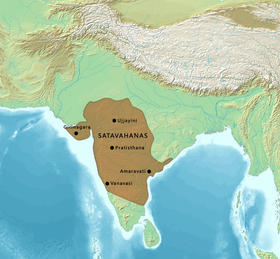
Satavahana Dynasty: Origins and Early History
The origins of the Satavahanas are shrouded in mystery, and much of what is known about them is based on inscriptions and coins. According to some scholars, they were a tribe of people who lived in the Deccan region of India and rose to prominence during the 1st century BCE. Others believe that they were a Brahmin family that migrated to the Deccan region from northern India.
The earliest known ruler of the Satavahana dynasty was Simuka, who is believed to have ascended to the throne around 230 BCE. Simuka established his capital in Pratisthan, which is believed to be present-day Paithan in Maharashtra. Over the next few centuries, the Satavahanas expanded their territory through a combination of military conquest and strategic alliances with neighboring kingdoms.
Satavahana Dynasty Founder
The Satavahana dynasty was founded by Simuka, who ruled from around 230 BCE to 207 BCE. He is considered to be the first king of the Satavahana dynasty, which was one of the earliest South Indian dynasties. The Satavahanas were known for their patronage of Buddhism and the construction of several Buddhist stupas and other monuments.
They also played an important role in the trade routes between North and South India, and their rule saw the development of a number of important towns and cities in the region.
Satavahana Dynasty Rulers
The Satavahana dynasty ruled a large part of present-day India from around 230 BCE to 220 CE. Some of the important rulers of the Satavahana dynasty are:
1. Satavahana Dynasty Rulers: Simuka (230-207 BCE):
He is considered as the founder of the Satavahana dynasty and established his capital at Pratishthana (present-day Paithan in Maharashtra).
2. Satavahana Dynasty Rulers: Satakarni I (c. 180-160 BCE)
He was one of the most powerful rulers of the Satavahana dynasty and extended his empire to cover a large part of present-day India.
3. Satavahana Dynasty Rulers: Gautamiputra Satakarni (c. 106-130 CE)
He was a powerful ruler who is known for his military conquests and patronage of Buddhism.
4. Satavahana Dynasty Rulers: Vasishthiputra Pulumavi (c. 130-159 CE)
He was a patron of the arts and is credited with the construction of several important monuments.
5. Satavahana Dynasty Rulers: Yajna Sri Satakarni (c. 167-196 CE)
He was a powerful ruler who expanded the Satavahana empire and patronized Buddhism.
6. Satavahana Dynasty Rulers: Vijaya (c. 207-223 CE)
He was the last ruler of the Satavahana dynasty, and his reign marked the end of the dynasty’s dominance in Indian politics.
Satavahana Dynasty: Military Prowess
The Satavahanas were known for their military prowess and their ability to conquer and control vast territories. They had a formidable army that was equipped with state-of-the-art weapons and armor, and they employed innovative tactics to defeat their enemies. The Satavahanas also had a well-organized administrative system that helped them maintain control over their territories.
One of the most significant military achievements of the Satavahanas was their defeat of the Shakas, a Central Asian tribe that had invaded northwestern India in the 1st century BCE. The Satavahanas, under the leadership of Gautamiputra Satakarni, defeated the Shakas in a series of battles and forced them to flee back to Central Asia.
Satavahana Dynasty: Administrative System
The Satavahanas had a well-organized administrative system that helped them maintain control over their vast territories. They divided their empire into provinces, which were governed by governors appointed by the king. The governors were responsible for maintaining law and order, collecting taxes, and ensuring the smooth functioning of the administrative machinery.
The Satavahanas also had a complex system of taxation, which included taxes on agriculture, trade, and professions. They used the revenue generated from these taxes to fund their military campaigns and patronage of art and culture.
Satavahana Dynasty: Patronage of Art and Culture
The Satavahanas were great patrons of art and culture, and they supported a thriving artistic and literary culture in their empire. They were particularly known for their patronage of Buddhist art and architecture, and many of the famous Buddhist caves and stupas in India were built during the Satavahana period.
The Satavahanas also promoted the development of Sanskrit literature and supported the work of famous poets and scholars such as Vimalakirti, Harisena, and Sarvasena. They were also known for their patronage of the performing arts, and their court was renowned for its music, dance, and drama.
Decline of Satavahana Dynasty
- The Satavahana dynasty was an ancient Indian dynasty that ruled in the Deccan region from around 230 BCE to 220 CE.
- The decline of the Satavahana dynasty is believed to have been caused by a combination of internal factors such as weak successors, succession struggles, and a decline in economic and administrative efficiency, as well as external factors such as invasions and attacks from foreign powers.
- One of the major internal factors that contributed to the decline of the Satavahanas was the succession struggles and weak successors.
- After the death of Gautamiputra Satakarni, the last great ruler of the Satavahanas, the empire was divided among his sons, which led to internal conflicts and weakened the central authority of the dynasty.
- This resulted in regional governors becoming more powerful and eventually breaking away to form their own independent states.
- Another factor that contributed to the decline of the Satavahanas was a decline in economic and administrative efficiency.
- The Satavahanas were known for their efficient administration, trade and commerce, and patronage of arts and culture.
- However, towards the end of the dynasty, the administration became weak, and the economy suffered due to a decline in trade and commerce.
- External factors such as invasions and attacks from foreign powers also contributed to the decline of the Satavahanas.
- The Sakas, Yavanas, and Pahlavas, who had been living in the northwest of India, began to infiltrate into the Deccan region during the reign of Satavahana king Gautamiputra Satakarni.
- These foreign powers threatened the security and stability of the Satavahana empire, and their constant attacks weakened the dynasty further.
Overall, a combination of internal and external factors contributed to the decline of the Satavahana dynasty. The weakening of the central authority, succession struggles, a decline in economic and administrative efficiency, and attacks from foreign powers all played a role in the eventual downfall of this once-great empire.
Satavahana Dynasty: Legacy
The Satavahanas made significant contributions to Indian culture and society, and their legacy can still be felt today. They played an important role in the spread of Buddhism in India and helped establish it as a major religion in the country. They also helped promote the development of Sanskrit literature and supported the work of famous poets and scholars.
Saka Dynasty
The Saka Dynasty is one of the most significant dynasties of ancient India. It was established in the 1st century BCE by the nomadic Saka tribes, who originated from Central Asia. The dynasty ruled over a vast area that encompassed modern-day Pakistan, Afghanistan, and parts of northwestern India. The Saka Dynasty played a crucial role in shaping the history and culture of ancient India.
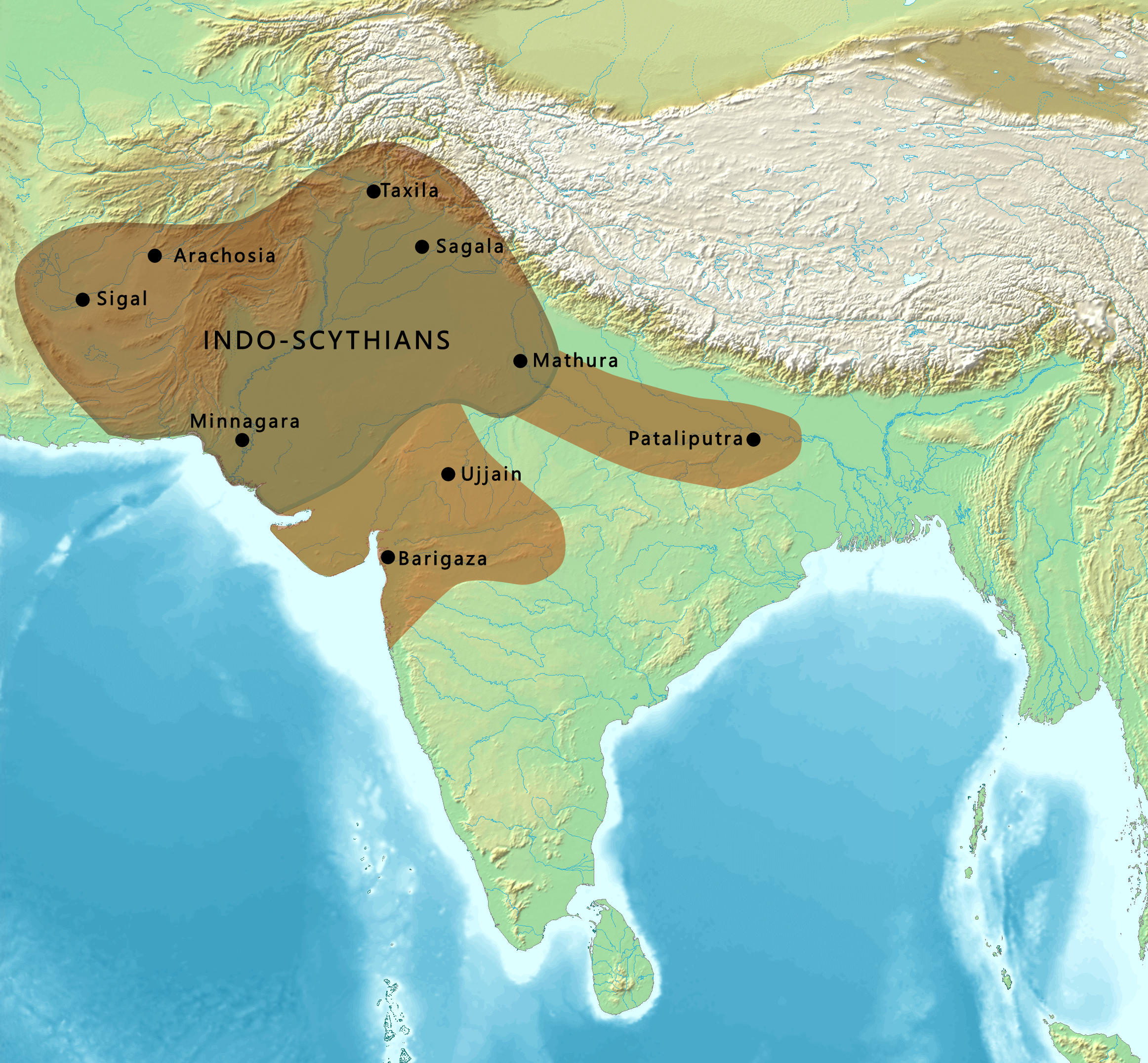
Origins of the Saka Dynasty
The Saka tribes were originally from the region of present-day Kazakhstan and Uzbekistan. They were a nomadic people who had migrated to the Indian subcontinent in search of new pastures for their herds of cattle. They settled in the northwestern regions of the subcontinent, including modern-day Pakistan and Afghanistan.
The Saka tribes were fierce warriors and skilled horse riders. They established their rule over the regions they had settled in and gradually assimilated with the local population. Over time, they formed a distinct culture and identity that came to be known as the Saka culture.
Saka Dynasty Founder
The Saka dynasty is believed to have been founded by King Kharavela in the 1st century BCE. Kharavela was a powerful king of Kalinga (present-day Odisha, India) who ruled from his capital city of Kalinganagara (modern-day Sisupalgarh). He is known for his military conquests and patronage of the arts and culture. The Saka dynasty was one of the important dynasties in ancient India, and it ruled over parts of present-day India, Pakistan, and Afghanistan.
Saka Dynasty Rulers
The Saka dynasty was a dynasty of Indo-Scythian rulers who ruled parts of present-day Pakistan, Afghanistan, and northwestern India from around 200 BCE to 400 CE. The Saka dynasty had several rulers, including:
1. Saka Dynasty Rulers: Maues (c. 90 BCE)
He was the first known ruler of the Saka dynasty who consolidated the Indo-Scythian territories in northwest India.
2. Saka Dynasty Rulers: Vonones (c. 75-65 BCE)
He was a successor of Maues and expanded the Saka rule further eastwards into northern India.
3. Saka Dynasty Rulers: Azes I (c. 58-12 BCE)
He was one of the most important Saka rulers who consolidated the Saka rule in northern India and issued several coins with his name on it.
4. Saka Dynasty Rulers: Azilises (c. 12 BCE-10 CE)
He was the son of Azes I and succeeded him on the throne.
5. Saka Dynasty Rulers: Zeionises (c. 10-35 CE)
He was a successor of Azilises and is known for his coins and inscriptions found in the Punjab region.
6. Saka Dynasty Rulers: Kharahostes (c. 10-20 CE)
He was a contemporary of Zeionises and ruled parts of the present-day Pakistan and Afghanistan.
7. Saka Dynasty Rulers: Kanishka (c. 127-150 CE)
He was the most famous ruler of the Saka dynasty and one of the greatest kings of ancient India. He expanded the Saka rule further into northern India and is known for his patronage of Buddhism.
8. Saka Dynasty Rulers: Vasudeva I (c. 192-225 CE)
He was a successor of Kanishka and ruled over a smaller territory than his predecessor.
Rise of the Saka Dynasty
- The Saka Dynasty was established by Maues, a Saka king who had conquered the region of Gandhara in present-day Pakistan.
- Maues was succeeded by his son, Azes I, who further expanded the Saka kingdom.
- Azes I was a powerful ruler who is credited with establishing the Saka era in 78 CE.
- The Saka Dynasty reached its zenith under the rule of Kanishka I, who was one of the greatest rulers of ancient India.
- Kanishka I was a patron of the arts and sciences and was instrumental in promoting Buddhism in the region.
- He is credited with organizing the Fourth Buddhist Council, which was held in Kashmir in the 1st century CE.
Kanishka I was also a great warrior and expanded the Saka kingdom to its greatest extent. He conquered large parts of present-day Pakistan, Afghanistan, and northwestern India. His rule marked the peak of the Saka Dynasty and the height of its power and influence.
Decline of Saka Dynasty
- The decline of the Saka dynasty is a complex topic, as several branches of the Saka dynasty ruled different regions of Central Asia and India at different times.
- However, one of the most significant factors contributing to the decline of the Saka dynasty was the invasion of the White Huns, also known as the Hephthalites.
- The White Huns were a nomadic people from Central Asia who invaded the region in the 5th century AD.
- They were fierce warriors who had a reputation for brutality and destruction.
- They swept through Central Asia and India, conquering and destroying many kingdoms, including the Saka dynasty.
- The Saka rulers who were able to survive the White Hun invasion were weakened by the conflict, and the power of the dynasty declined.
- Other factors that contributed to the decline of the Saka dynasty included internal conflicts, economic decline, and the rise of other regional powers.
Eventually, the Saka dynasty was absorbed into other regional powers, such as the Gupta Empire in India. The legacy of the Saka dynasty, however, continued to live on in the cultural and artistic achievements of the region, such as the famous Buddhist cave temples of Ajanta and Ellora.
Legacy of the Saka Dynasty
- The Saka Dynasty left a lasting legacy on the history and culture of ancient India.
- Their rule led to the assimilation of the Saka culture with the local cultures of the subcontinent, which resulted in the emergence of a unique Indo-Saka culture.
- The Saka Dynasty was also instrumental in the spread of Buddhism in the region.
- The rulers of the dynasty were great patrons of Buddhism and promoted its teachings and philosophy.
- This led to the establishment of numerous Buddhist monasteries and stupas across the Saka kingdom.
- The Saka era, which was established by Azes I in 78 CE, is still used as the official calendar in many parts of India and Nepal.
- The Saka era is also recognized by the Indian government as the official calendar for official purposes.
The Saka Dynasty played a crucial role in shaping the history and culture of ancient India. Their rule led to the emergence of a unique Indo-Saka culture, and they were instrumental in the spread of Buddhism in the region. The legacy of the Saka Dynasty is still felt in many parts of India and Nepal, and their contributions to Indian history and culture cannot be overstated.
Kushan Dynasty
The Kushan Dynasty was an ancient empire that ruled a large part of Central Asia, northern India, and parts of China from the 1st to the 3rd century CE. The Kushans were a nomadic people of Central Asia who established a vast empire that played a significant role in the spread of Buddhism and the development of the Silk Road.
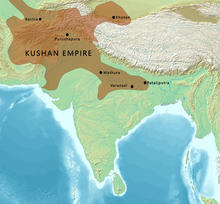
Origins of the Kushan Dynasty
The origins of the Kushan Dynasty can be traced back to the Yuezhi people, a nomadic tribe that lived in the region of present-day western China and Central Asia. The Yuezhi were defeated by the Xiongnu Empire in the 2nd century BCE and were forced to migrate to the west. The Yuezhi migrated to the region that is now Uzbekistan and Tajikistan, where they established a powerful confederation of tribes that became known as the Kushans.
Kushan Dynasty Founder
The Kushan Empire was founded by Kujula Kadphises, who was the first known ruler of the Kushan dynasty. Kujula Kadphises ruled from around 30 CE to 80 CE and was known for his military conquests and his efforts to expand the Kushan Empire. He was succeeded by his son, Vima Takto, who continued to expand the empire and is known for his patronage of Buddhism. The Kushan Empire was one of the most significant empires of ancient India and played an important role in the spread of Buddhism and trade along the Silk Road.
Kushan Dynasty Rulers
The Kushan Empire was a large ancient empire that existed from the 1st to the 4th century AD in parts of present-day India, Pakistan, Afghanistan, and Central Asia. The Kushan rulers, also known as Kushanshahs, were a series of emperors who ruled the Kushan Empire. Here are some of the most significant Kushan dynasty rulers:
1. Kushan Dynasty Rulers: Kujula Kadphises (30 CE to 80 CE)
He was the founder of the Kushan Empire and ruled from around 30 CE to 80 CE.
2. Kushan Dynasty Rulers: Vima Kadphises (80 CE to 100 CE)
He was the son of Kujula Kadphises and ruled from around 80 CE to 100 CE. He expanded the empire into the regions of Gandhara and the Punjab.
3. Kushan Dynasty Rulers: Kanishka (127 CE to 150 CE)
He was one of the most famous and powerful Kushan rulers, who ruled from around 127 CE to 150 CE. He was known for his support of Buddhism and is credited with convening the Fourth Buddhist Council.
4. Kushan Dynasty Rulers: Huvishka (150 CE to 180 CE)
He was the successor of Kanishka and ruled from around 150 CE to 180 CE. He continued his predecessor’s support for Buddhism and sponsored many Buddhist projects.
5. Kushan Dynasty Rulers: Vasudeva I (191 CE to 230 CE)
He was the last significant Kushan ruler and ruled from around 191 CE to 230 CE. He faced many challenges, including invasions by the Sassanid Empire, which weakened the Kushan Empire.
Kushan Dynasty: Expansion of the Kushan Empire
- The Kushans established their capital at Peshawar, in present-day Pakistan, and began to expand their territory.
- They conquered the regions of Bactria, Sogdiana, and Gandhara, which encompassed present-day Afghanistan, Uzbekistan, and parts of Pakistan.
- The Kushans also expanded into northern India, where they established their rule in the regions of Punjab, Rajasthan, and Uttar Pradesh.
- The Kushan Empire was a cosmopolitan society that attracted traders and scholars from all over the world.
- The Kushans played a significant role in the development of the Silk Road, which was a network of trade routes that connected China to the Mediterranean.
- The Kushans established a strong trading relationship with the Chinese Han Dynasty, which allowed them to import Chinese goods such as silk and porcelain.
The Kushan Empire was also a center of Buddhist culture. The Kushan emperor Kanishka was a patron of Buddhism and sponsored the construction of several Buddhist monasteries and stupas, including the famous Gandhara school of art. The Kushan Empire played a significant role in the spread of Buddhism to China and other parts of Asia.
Decline of the Kushan Dynasty
The Kushan Empire, which existed from the 1st to the 3rd century CE, experienced a gradual decline over several decades, which eventually led to its collapse. Some of the major factors that contributed to the decline of the Kushan Dynasty are:
- Internal Conflicts: The Kushan Empire was plagued by internal conflicts and power struggles, which weakened the central authority and led to fragmentation of the empire.
- Economic Instability: The Kushan Empire heavily relied on trade, and its decline in trade relations with Rome and China caused economic instability and weakened the empire’s financial resources.
- External Threats: The rise of the Sassanid Empire in Persia and the Gupta Empire in India, both of which were expanding their territories, posed a serious threat to the Kushan Dynasty.
- Invasion by the Huns: The Huns, a nomadic tribe from Central Asia, invaded the Kushan Empire in the 4th century CE and destabilized the region, which led to the eventual collapse of the Kushan Dynasty.
These factors, along with others, contributed to the decline and eventual collapse of the Kushan Dynasty, and the region fell under the control of other powers such as the Sassanids and the Gupta Empire.
Kushan Dynasty: Legacy
The Kushan Dynasty was a powerful empire that played a significant role in the development of Central Asia, northern India, and the Silk Road. The Kushans were a cosmopolitan society that attracted traders and scholars from all over the world, and their patronage of Buddhism contributed to the spread of the religion throughout Asia. The Kushan Empire eventually declined due to internal conflicts and external pressures, but its legacy lived on in the region for centuries to come.
Check: All UPSC History Notes



 TSPSC Group 1 Question Paper 2024, Downl...
TSPSC Group 1 Question Paper 2024, Downl...
 TSPSC Group 1 Answer key 2024 Out, Downl...
TSPSC Group 1 Answer key 2024 Out, Downl...
 UPSC Prelims 2024 Question Paper, Downlo...
UPSC Prelims 2024 Question Paper, Downlo...
